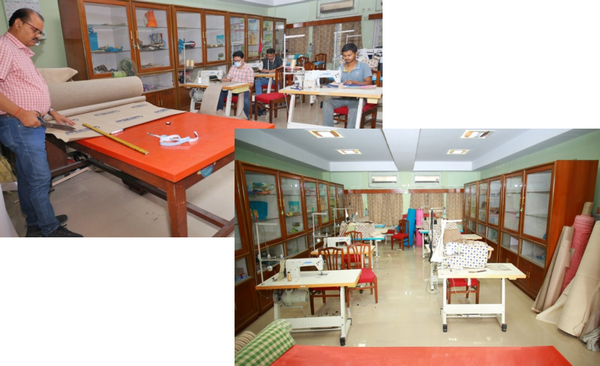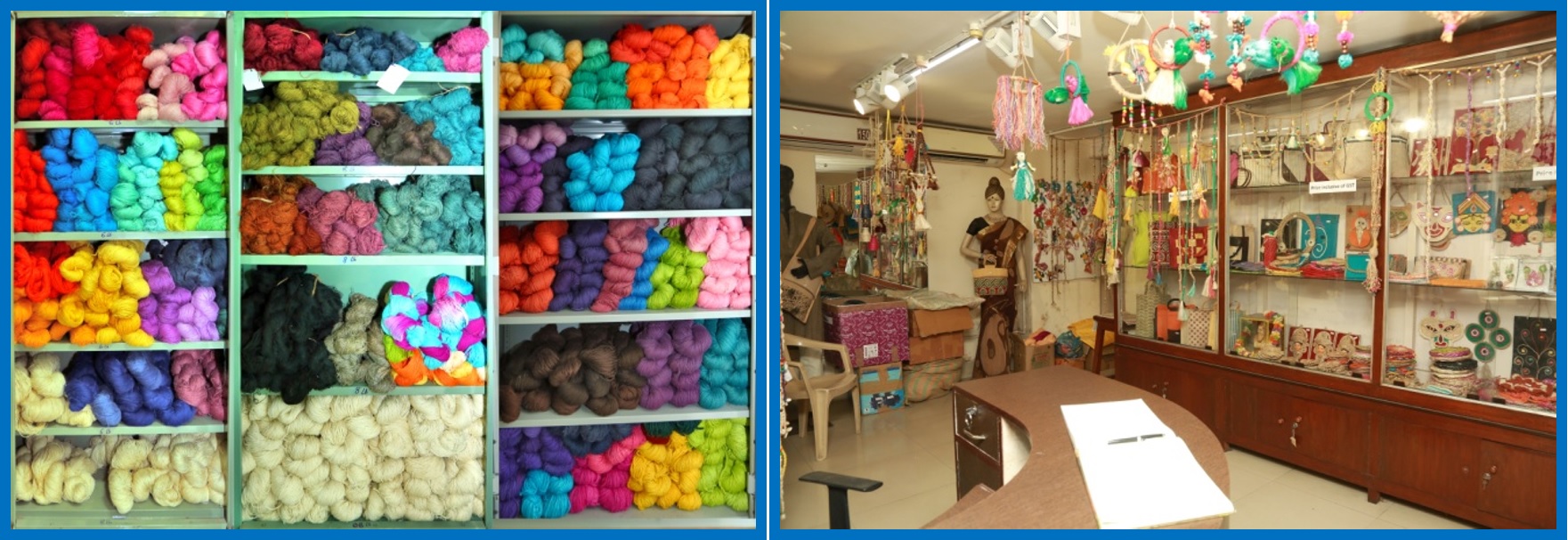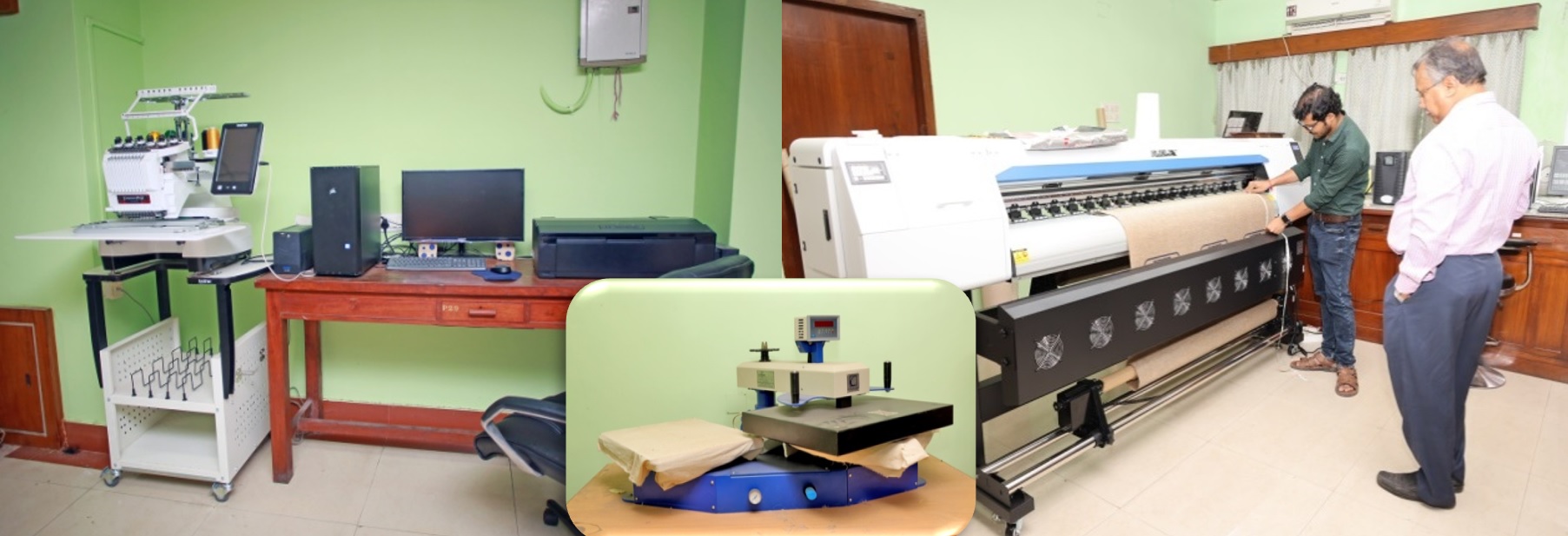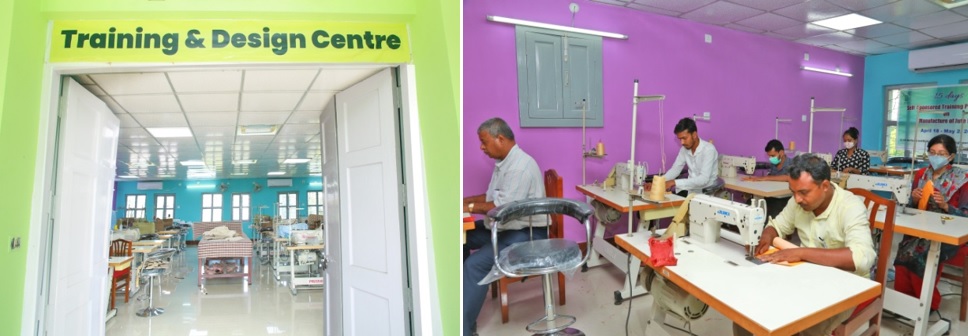Facilities
Mandate
§ Quality evaluation and grading of natural fibres
using instrumental method
§ Calibration of instate developed mechanical as well
as digital grading instruments
Machinery and Equipment:
|
Softener Softening of raw jute streak by mechanical flexing
with pressure or partial splitting of jute streak by coarse gilling. |
|
|
|
Breaker carding machine Splitting for filamentation as well as mixing of
different grade of fibres by multiple folding of spreader sliver and sliver
formation. Breaker cards are generally down striking and half circular. |
|
|
|
Finisher carding
machine The objective of finisher card is to make the sliver
regular and uniform in length and weight. The slivers also get further
attenuated and equalisation of fibre takes place at the successive working
zones between workers and cylinder roller. |
|
|
|
All fibres become parallel to each other. In this
operation, thinning of sliver occurs at the delivery end. This process
reduces the sliver irregularity by doubling. The parts are retaining roller
(to retain the fibre), drawing roller, gill comb (which has spikes to control
the fibre movement, also known as gill drawing). |
|
|
|
Yarn formation by twisting the fibre bundle on an
apron draft/ slip draft flyer spinning machine and winding of yarn is done by
bobbins. |
|
|
|
Handlooms Handlooms are characterized by their manual
operation, where the weaver uses physical effort to create interlocking
threads, forming the fabric. The major parts of handloom include loop frame,
warp beam, heddles, shuttle and reed and the important steps in handloom
weaving are warping, threading, weaving, beating and tying off. |
|
|
|
Power Loom A power loom is a mechanized weaving machine used
for producing fabrics on a larger scale compared to handlooms. Advantages of
power loom are higher productivity, cost-effectiveness, consistency,
uniformity and can create complex patterns including intricate designs and
patterns through dobby or jacquard shedding mechanisms. |
|
|
|
Non-woven
laboratory Mechanical bonding Needle punching is a widely used mechanical bonding
technique in non-woven fabric production. It is a process for converting webs
of fibre into coherent fabric structures, normally by means of barbed
needles, which produce mechanical bonds within the web. Thermal bonding A blend of fusible fibre having very low melting
point, with jute fibre is passed through hot calendar rollers, where fusible
fibres melt and form bonds. Adhesive bonding The chemical bonding method is a technique used to
create non-woven fabrics from jute fibers by applying chemicals that promote
bonding and cohesion between the fibers. |
Contact
person:
Dr. Sanjoy Debnath
Head of Department
Mechanical Processing Division
E-mail: sanjoy.debnath@icar.gov.in






 Screen Reader Access
Screen Reader Access Login
Login Payment Portal
Payment Portal












